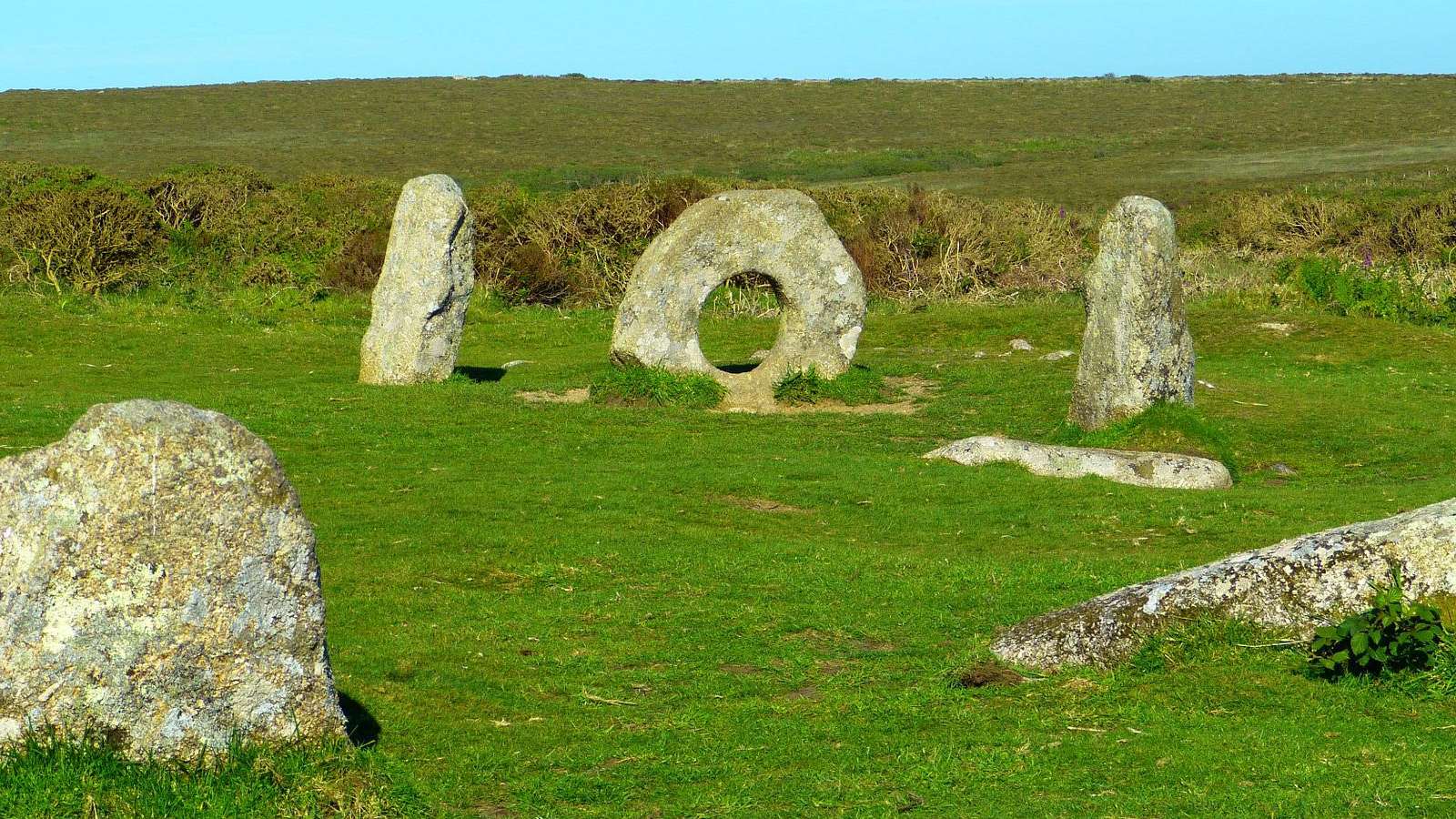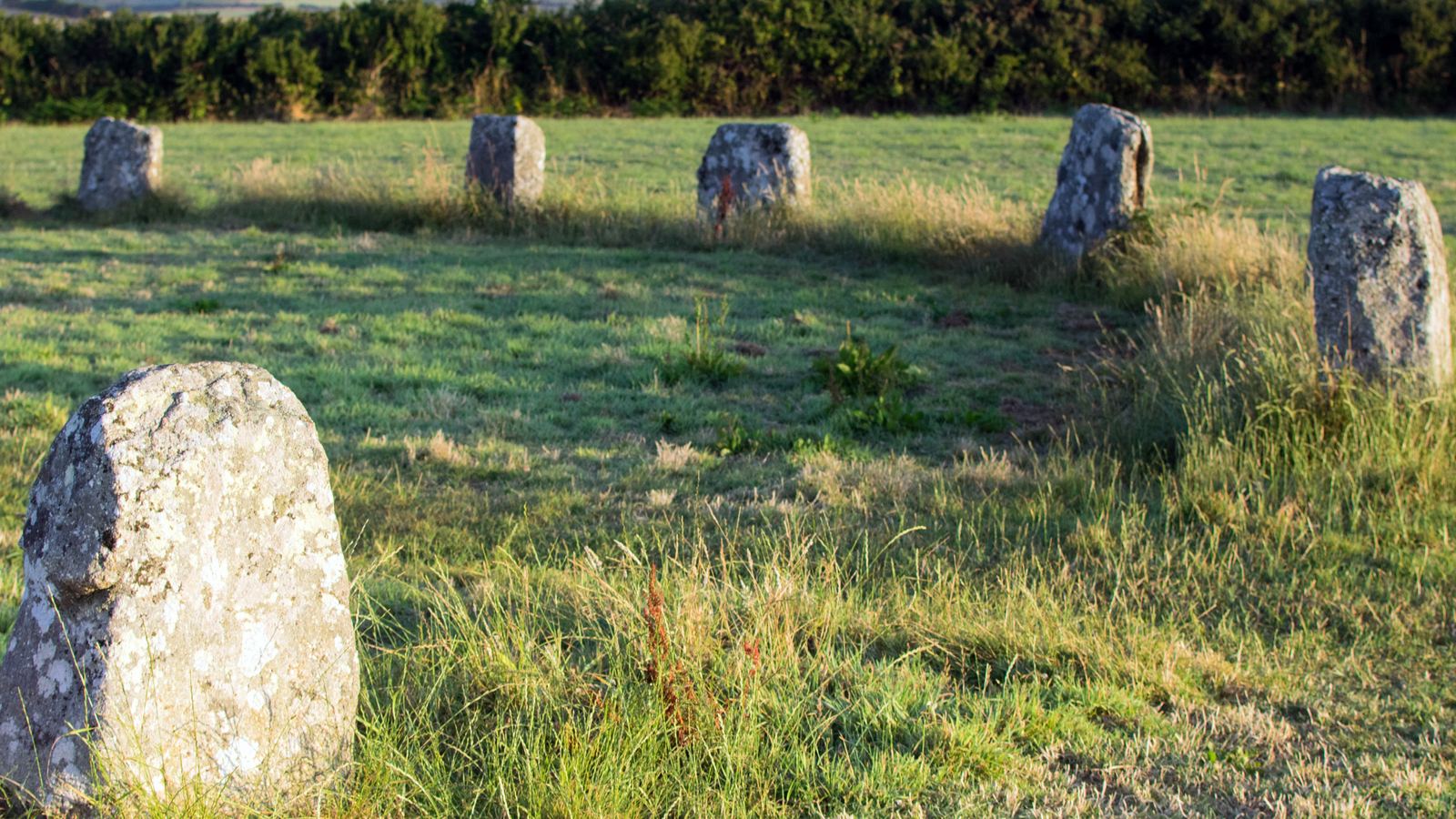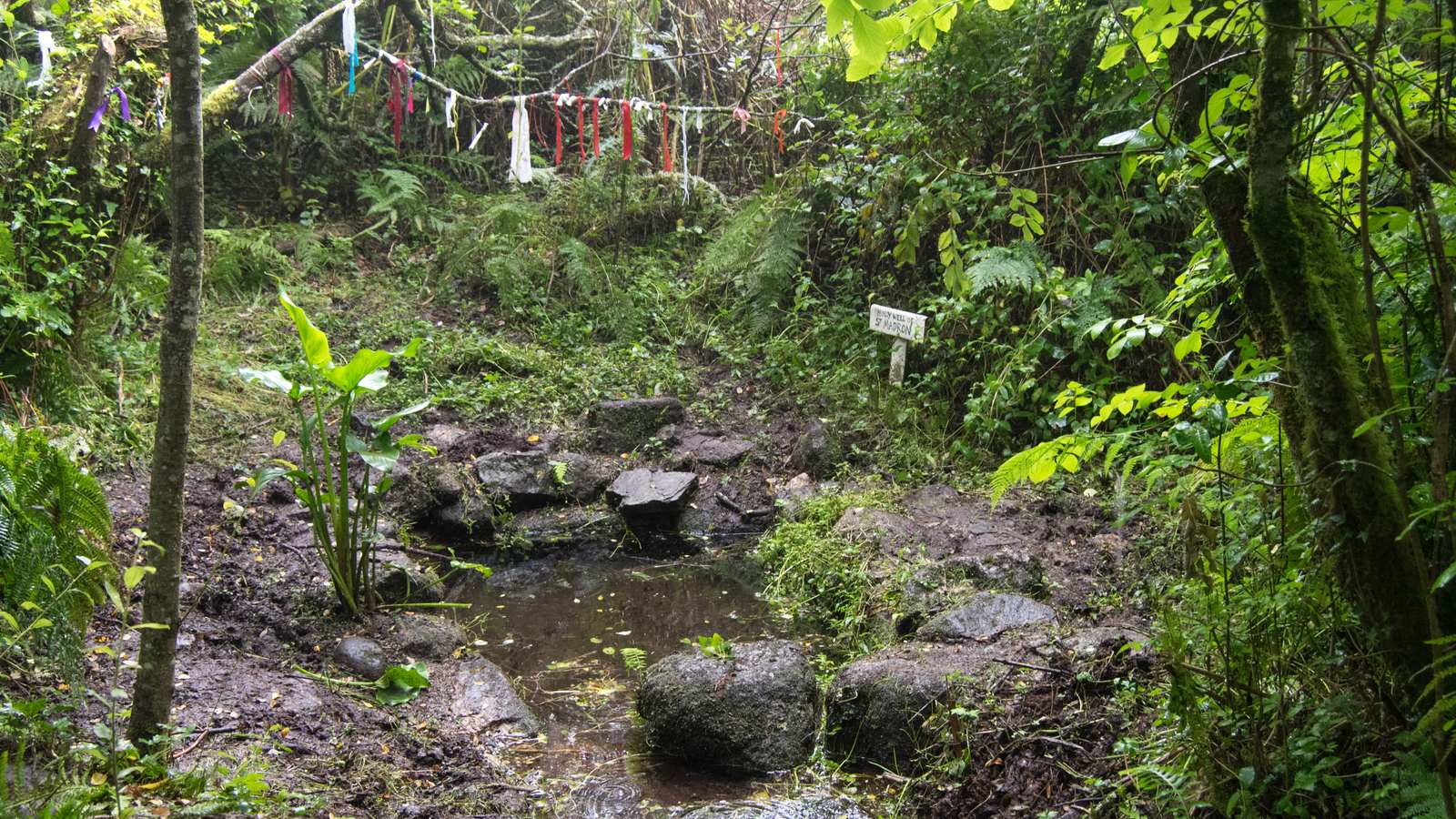Wild, rugged, and timeless, the far west of Cornwall feels far more in touch with its ancient roots than other parts of England, so it’s not surprising that its home to more than a sprinkling of ancient sites. From standing stones to holy wells, here are our top spots to visit whilst enjoying a staycation in Cornwall:
Mên-an-Tol
Standing near the Madron to Morvah road, this is perhaps the most well-known of Cornwall’s ancient sites with its iconic circular middle stone with a hole through it, flanked by two standing stones. Of late Neolithic, early Bronze Age origin (2500- 1500 BCE), it is thought that the stones were part of a larger stone circle. With a rick folkloric history, it is said that passing through the hole cures numerous ailments, such as rickets in children and back problems (earning it the name of ‘Crick Stone’). The largest holed stone in Cornwall, it is also seen as a charm against witchcraft and ill-wishing, and a tool for fortune telling. It’s also reputed that if a woman passes through the hole seven times on a full moon, she will soon become pregnant. Folklore aside, the Mên-an-Tol is situated on jaw-dropping moorland within a designated National Landscape and it’s a gorgeous walk to reach it (especially in late summer when the heather carpets the landscape in purple) with glimpses of the sea in the distance.
Morvah Road, Bosullow, Penzance TR20 8NU | NGR: SW 4265 3494

Lanyon Quoit
One of Cornwall’s most photographed and best-known ancient monuments, it’s a shame that Lanyon Quoit is one of the least authentic. Situated in moorland between Madron and Morvah, it originally dates from the early Neolithic period (3500 – 3500 BCE), it was much larger and taller than it is today. Unfortunately, in 1815 there was a ferocious storm and the quoit collapsed. It was re-erected on a much smaller scale and the huge capstone, weighing over 13 tons, was placed on three upright stones rather than four. Originally standing at the northern end of a large burial mound (or barrow) that was 90 foot long (27 meters) and 40 foot wide (12 meters) - it would have been a magnificent site. Known as ‘The Giant’s Table’ and mentioned in Arthurian legends, you can peer at it through the hedgerows on the road just off the B3306.
B3306, Madron TR20 8NY | NGR: SW4298 3369
Carn Euny Ancient Village
Set just outside the tranquil hamlet of Sancreed in the far west of Cornwall on the Penwith peninsula, Carn Euny is one of the best-preserved ancient villages to be found in the area. Occupied from the Iron Age through to the late Roman times, the site is home to a collection of stone ‘courtyard’ houses unique to West Cornwall, where rooms, huts, workshops, and stables are built around a central courtyard, with a large doorway leading out into the ‘street’. The highlight of the site however is the fabulous stone-walled fogou, a huge underground chamber with a side beehive-shaped chamber and a creep passage built in the Iron Age. Only found in the far west of Cornwall, it’s unclear as to what fogous were used for, and suggestions range from underground storage chambers to ritualistic spaces. It's best to bring boots with you if it has been raining; the village is in a field accessed along a path that can be muddy during wet weather, and the fogou can flood in places.
Sancreed, Penzance, Cornwall TR20 8RB
Sancreed Holy Well
Sancreed is a special place. Not only is it home to Carn Euny, it also has a beautiful holy well tucked away amongst the trees. Park up near the church and look for the telephone box opposite; you’ll spot the public path easily next to it and follow it right down to the well. Lying nestled in a grove of pine trees and holly, under the bows of a cloutie tree (a tree adorned with strips of cloth and ribbons representing prayers or wishes), stone steps lead down to its small basin filled with clear, cold water, whilst the surrounding moss-covered stones shine with a phosphorescent glow. There’s no doubting the magical, peaceful energy of this spot, which lay buried for a long time before being discovered by the Vicar of Sancreed in 1879. The remains of an early Christian chapel lie behind the well, with a large 15th century carved stone in one corner.
Sancreed, Cornwall NGR: 4180 2935
Chysauster
Originally occupied almost 2,000 years ago, this incredible site occupies a wonderful position just outside Penzance with far-reaching views of the sea and surrounding countryside. Like Carn Euny, it’s a Romano-British settlement made up of stone-walled ‘courtyard’ houses that lined a village street. Through thorough investigation, archaeologists believe the inhabitants were farmers, with pigs and goats. The settlement was occupied for only twenty years, it’s not known why they left, but it may have been to the lack of fuel and the dwindling population. The village also has a fogou, unfortunately you can’t go into it due to a landslide, but you can view it as you wander around the settlement, now managed by English Heritage.
Newmill, Penzance, Cornwall TR20 8XA
Boscawen-Un (pronounced Bosca-noon)
This fantastic stone circle isn’t, in fact, a circle – it’s oval. With nineteen large upright stones, all of which are granite except for one, which is made from sparkling white quartz, it’s an impressive sight. Within the circle lies a tall central stone, with two axe carvings on the north-eastern side, thought to be the only known examples of stone axe carvings in Britain. It is believed that the central stone represents the masculine whilst the quartz stone represents the feminine, being positioned in the south-west. Obviously a very important location during its heyday, there are four barrows (burial mounds) nearby, as well as a Neolithic menhir to the northeast, leading experts to believe it was used not just for ritualistic purposes and a meeting place for druids, but for other gatherings and social events too. This stone circle lies south of the main A30 road between Penzance and Land’s End about a mile before Crows-an-Wra.
St Buryan, Penwith, Cornwall NGR: SW 4149 2762
The Merry Maidens and Pipers of Boleigh
This is one of the few stone circles in Cornwall that’s a true circle in shape. Like Boscawen-Un, it has nineteen stones which are graded in size, with the tallest ones to the southwest. In addition, they have flat inner faces and flat, level tops. Dating from the late Neolithic-early Bronze Age, it was completely restored in 1879 having been discovered earlier that century. There’s also a barrow cemetery nearby where human bones have been excavated as well as urns and a stone spearhead. Also known as ‘Dans Maen’ (the Cornish for ‘dancing stones’) the folk tale is that the stones were once maidens who chose to make merry on the Sabbath and were therefore turned to stone – either a Christian morality tale or a whisper of the memories of the rituals that took place there. You’ll find the Pipers of Boleigh stones just across the road and comprise of two massive granite standing stones (menhirs) of 4.5 meters and 5 meters in height. The sites are easy to find just off the B3315 about four miles from Penzance, past the turning to Lamorna Valley about half a mile on, the Merry Maidens are on the left. There’s a small parking bay and a stile leads into the field.
St Buryan, Penwith, Cornwall SW 4327 2450

Madron Holy Well
Weave your way down the muddy path lined by blackthorn and hawthorn, passing the cloutie tree on the left, along to the ancient well of Madron, long revered for its magical healing powers. Laying just north of the village of Madron, the well head of this pre-Christian site is defined by a rough circle of granite slabs (re-laid in the 80’s) which can be submerged in wet weather. Next to the well lies the remains of a 12th century chapel with a door to the north, very unusual in Christian churches. Despite the altar and dedication to St Madern, this spot is pre-Christian, and it’s considered that St Madern is a Christianised version of the Celtic mother goddess Modron. Closely connected to the month of May and Beltane (the festival of fertility), the sick would visit here, enter the water three times naked, walk around the well clockwise three times then rest on a nearby hillock. They would then rip a piece of their clothing, tie it to the cloutie tree and as the rag disintegrated, so the ailment would improve. Maidens could also find out when they would marry in May by making a cross out of straw and a pin, dropping it in the water and counting the number of bubbles that came up, each bubble representing a year. The well can be found to the north of the village of Madron, about a mile from Penzance.
Madron, Cornwall SW 4464 3280
Feeling inspired? Take a look at our luxury cottages in west Cornwall here.
